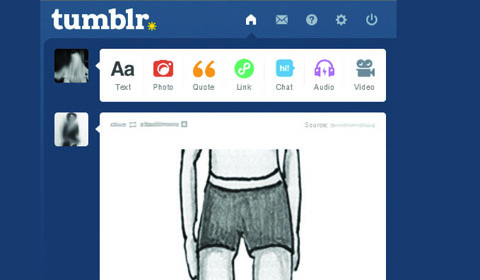
Kelly* stands in front of the mirror with her feet together and hips pushed back. She gazes at the space between her thighs. She has become a victim to the latest weight-loss craze, the desire for a “thigh gap.” In this day and age, just being skinny no longer makes the cut.
The way women view their bodies is constantly evolving. In the 1950s, style icons like Marilyn Monroe graced the pages of magazines with their curvy, size-eight figures. Some young women tried to mimic Monroe’s curvy figure by following Monroe’s exercise plan or her habit of taking ice baths to supposedly firm her body. They wanted to be firm but voluptuous.
The shift away from curvy figures occurred in the 1960s, when English model Twiggy appeared on the cover of Vogue and helped popularize the stick-like model frame that persists today.
Today, girls who look like Marilyn Monroe would be seen as plus-sized, or even fat.
The so-called “thigh gap” is the space between the thighs on a female body. Recently, new fads have developed as extensions from the thigh gap, such as the thigh triangle or thigh heart gap. The thigh triangle is the upside-down triangle formed when your inner legs don’t touch right at the top. A thigh heart gap is the heart-like shape at the top of the inner thighs.
Lauren ’15 thinks the obsession with the thigh gap has gone too far.
“It’s sad to see girls believe their self-worth comes from a geometric shape between their thighs,” Lauren said.
Shira ’15 said she believes social media outlets like Tumblr and Facebook are to blame for new body image obsessions like protruding collar bones, thigh triangles, and the thigh gap.
“I feel like ‘skinny’ has for years and years been seen as an indication of beauty in magazines, television and fashion. However, lately there is a whole ridiculous online phenomenon that glamorizes the twisted concept that a depressed teen with a thigh gap is the new epitome of beautiful,” Shira said.
Shira added that girls obsess over these fads in order to receive approval from other girls instead of boys.
“Guys don’t find [the skinny, depressed] look attractive. They are far more attracted to girls with toned, healthy bodies. I believe it’s more of a strange form of competition [among] girls or between a girl and herself,” Shira said.
Many teenage girls believe that the thigh gap has become the ideal body shape. Tumblr users reblog pictures of girls with thigh gaps and protruding collar bones. Facebook has a group called “The Gap” that people can “like” in order to view pictures of girls with thigh gaps.
Even more disturbing are pro-anorexia blogs, some of which exist as resources for girls suffering from anorexia. Others argue that anorexia is not a mental illness but a lifestyle choice. Some blogs, like Thinspiration Pictures, post pictures of very skinny girls to inspire others to be dangerously thin.
Because most women have hips that are set closely together, a thigh gap is an unrealistic standard of beauty, but some girls go to extreme measures in order to attain one.
Because the thigh gap is simply unattainable for most girls, teens can develop self-esteem problems that lead to eating disorders, depression and even suicide.
Kelly* has struggled with anorexia for months and goes to extreme lengths to maintain her thigh gap.
“When I gain some weight back, I get angry at myself. The only proof that my weight is where it’s supposed to be is when I look in the mirror and see that thigh gap. Seeing legitimate proof shows me that something is working,” she said.
Kelly* also believes that no matter how skinny she gets, she will never be able to look like the models in pictures on Tumblr and in magazines.
“I see myself as a much bigger person because of the photos of models I see. No matter how much weight I lose, I feel like I can never look like them. There’s always something more I have to do to get to that place,” she said.
School Counselor Emily Vaughn said she believes social media is the primary influence on girls’ body image.
“Social media promotes the same images of skinny models over and over again, and girls begin to think that’s the way they are supposed to look. What happens then is that girls will look for people who look like that and post those pictures online on websites like Tumblr,” Vaughn said.
According to society’s standards, beyond skinny is the new beautiful.












